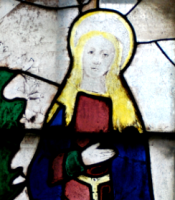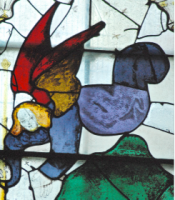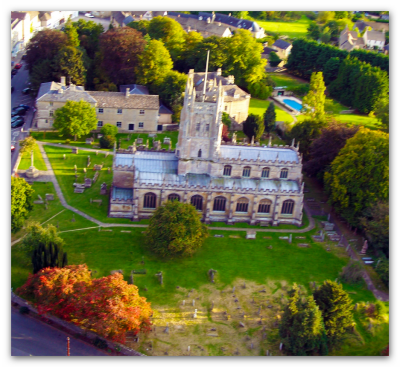 |
 |
St Mary's Church
|
 |

|
The History of St Mary's ChurchIn the Domesday Book account of Fairford a priest is mentioned so it is quite likely there was a late Saxon church. For all we know there may be traces of a simple structure beneath the present building. The oldest visible features today are the small surviving sections of arches on the west sides of the central tower partly hidden behind the later buttressing. The ball flower decoration suggests a date in the 14th century. The tower itself was rebuilt early in the 15th century and this tower remained after John Tame got permission from the Diocese of Worcester to demolish the rest of the church. The additional buttressing was added to support an increase in the height of the tower. The new building is thought to have been carried out in the 1490’s and completed in 1497. It was in the Perpendicular style, a style that showed the mastery the craftsmen had over their materials. The slender elegant columns were strong enough to support the load on them and the walls allowed for large areas of glass. You only have to think of a typical Norman church with its chunky columns and tiny splayed windows to see how architecture had evolved over 400 years. We don’t know whether the rebuild was carried out with a commission already prepared for the windows. It is likely to be the case given that they appear to have started work on glazing soon after the building was ready. John Tame died in 1500 so his son Edmund would have been in charge for the majority of the time the glass was being installed. By 1515 it was complete. Edmund also had the screens put in.
The windows are of enormous value to us because they are a complete scheme. It is clear there was a theological plan of what was to be illustrated and what position it should occupy. You can enjoy yourself on a visit trying to work out why a particular episode or character has been included and what their position might tell you. For example why is the prophet David facing the apostle James the Great? The windows had not been in long before the religious upheavals of the 16th century threatened them. Clear orders were issued in Edward VI’s reign to rid churches of all idolatrous images. In parts of the country this led to great destruction of glass and another period of similar glass breaking happened in the early 17th century. We don’t know how Fairford’s glass survived but there are theories e.g. whitewash, protection by influential people. Ironically it was an “act of God” that caused the greatest destruction to the windows. In November 1703 a great storm across southern England caused massive damage and loss of life. The three west-facing windows were damaged and the vicar came in the following morning to find glass strewn across the floor. The windows were repaired as best they could but there were gaps and mistakes. In the middle of the 19th century there was a move to repair the Great West Window and a company called Chance Brothers of Smethwick took away the top half. Instead of repairing it they replaced it. Unease about this and the replacement of two of the apostles led to a halt to anything but careful mending of leads and limited restoration. In 1986 Keith Barley was commissioned to begin a full conservation and restoration programme which began in 1988 and finished in 2010. The windows should now be good for a century of two. The ancient glass is no longer exposed to the attrition of the weather – clear glass protects the vulnerable old glass while inside condensation is avoided by allowing air to circulate both sides of the glass. We have almost no record of how in earlier times Fairford’s glass managed to survive but we do know the townspeople today are determined to safeguard its future. |
Copyright © St Mary's Parochial Church Council 2010-2012
